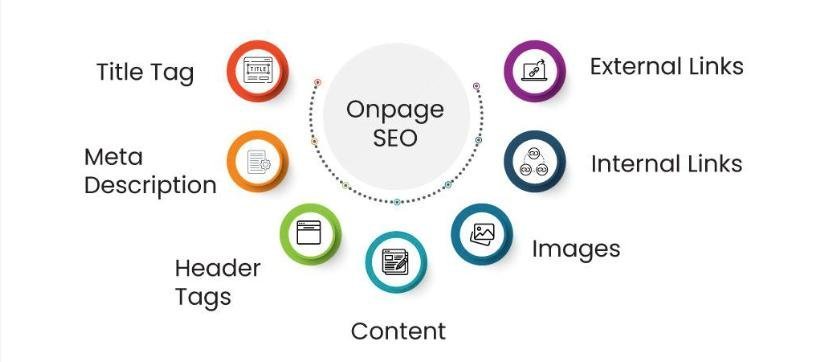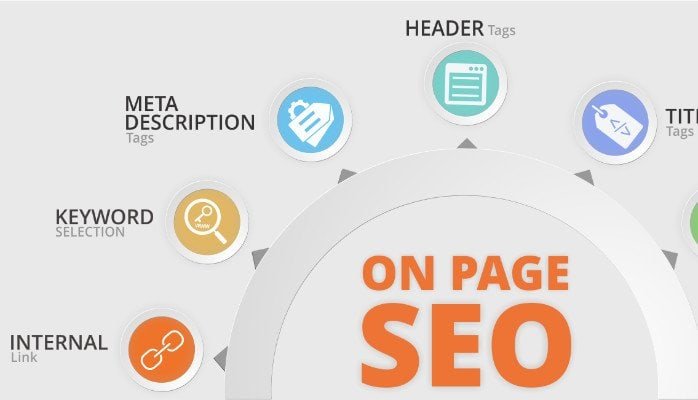What’s up? Today, we’re going to get you tricks you’ll need to bring your on-page SEO to the next level of super-duper traffic-boosting. If, despite being on this page, you’re not interested in learning how to spam the search results and aren’t just here for one of those cute cat pictures, stick with me. We’re going to the deep end of the pool. We’re tapping into the techniques used by the very best SEO ninjas and setting up your website to kick ass and outperform its competition in 2024. So let’s do it! But remember, while on-page SEO is crucial, it’s only part of the equation for dominating the search rankings. To truly elevate your online presence, you’ll also want to focus on mastering offpage seo tactics that can amplify your authority and visibility across the web. By combining these strategies, you’ll be well-equipped to not just attract visitors, but to convert them into loyal customers.
Embrace Comprehensive Keyword Strategies
If you’re doing next-level on-page SEO in 2024, you’re no longer undertaking a superficial search for keywords, but instead you’re deeply analysing the pathways of information a keyword relates to and mapping it to search intent. But this is not about courting attention—it’s about courting the right kind of attention right at the moment in the buyer’s journey that’s important to what you’re selling. A keyword has to have the correct search intent to get you in front of the right eyes at the right time, whether that’s early in the funnel for informational keywords or closer to a sale for keywords with commercial intent.
Here, long-tail keywords become incredibly valuable—a phrase is a conversation between the consumer and the business—with your potential customers or questions they have when they are searching online. A phrase, as a keyword, has a lower search volume but a much higher conversion rate because its intent provides higher alignment with the user. Finding these long-tail terms using tools such as Keywords Everywhere and Ahrefs is key, as it is no longer about the keywords but the data around those keywords. The tools offer, to a degree, search volume trends, keyword difficulty, and competitive density, which all inform things that you need to be doing within your content in order to be found.
Additionally, with these tools at hand, you will be able to track how trends in search are adapting and consequently adapt your keyword strategy to stay at the forefront in a very competitive space. You can try this by looking into insights on how words are changing in terms of popularity, as well as what new keywords are growing in search volume, especially relative to your industry. For instance, you might notice such a trend if certain keywords start to buzz with your target market.
Utilizing such layers of granular insights into keywords can really help better optimise content—making it more relevant and engaging, better understood by the search engines, and so more likely to rank well in the SERPs. These tools can also be integrated with other niche SEO functions (such as content creation and performance tracking) and so represent an essential part of the toolkit for the marketer who aspires to mastery of SEO at the highest levels.
This level of detailed, intention-based keyword strategy will always be at the heart of any meaningful SEO effort for any business showing up successfully online in 2024. Matching your content with what your audience is looking for (and how) means maximising SEO traffic but also the all-important conversions. SEO will always offer an essential hook into your wider digital marketing arsenal.

Strengthen Your Site’s Architecture
In addition to being easier for your users to navigate, a well-architected website can also boost your SEO considerably by making it easier for search engines to crawl and index your content. The most important aspect of site architecture is URL structure. By helping search engine crawlers identify the focus and substance of each page, URLs can help boost your SEO rankings. They should be short and descriptive, contain page keywords, and be correlated with your domain structure.
Furthermore, your site hierarchy should make it easy for users and search engines alike to jump from section to sub-section. Properly structured site hierarchy can help you parcel out page authority and link equity amongst your site’s pages in a more efficient manner to improve the performance of your SEO at an individual page level. For example, internal linking placement might be used to prioritise certain pages (such as newer or less visible pages) with the intention of sending authority or link equity that would otherwise be lost behind a login arbitrarily to other users.
Tools available include Lumar or Sitebulb, both of which scan your site’s current structure (how you’ve linked your internal pages together), tell you what your users are doing when they visit your site (usually through their interaction with a piece of software your web company has planted on your site called Google Analytics, or via a similar tool your SEO agency has set up called Google Search Console), and spot any technical SEO problems such as broken links, target pages that have redirected, or pages buried within your site structure that search engine crawlers can’t access (known as ‘dead ends’). They will then offer recommendations as to how to improve the crawlability of your site, as well as your users’ experience using this code.
Another technique is what’s known as breadcrumbing, where an additional set of navigation links is set up that (just like in the story of Hansel and Gretel) make it much easier for your ‘audience’—the u users of your website—to navigate your content. It also helps search engines better understand your site’s content and microstructure, extending the benefits to indexing and potentially to SEO (for example, your pages may appear in Google’s ‘breadcrumb trails’ in their search results pages).
Regardless of your industry or business size, well-structured site architecture means users stick around longer with fewer bounce rates and more pages viewed—metrics that search engines shine a spotlight upon. Site architecture that is built with and structured for users and search engines ensures you’re off to a solid start in your overall digital marketing initiative.

Improve User Engagement with Visual Content
Visuals such as images, videos, and infographics on your blog can enrich the user experience while helping your SEO. Be sure to tag the right alt tags, apply the right file names, and make sure the images are well compressed so they don’t take forever to load. Since we all know users appreciate visuals, don’t you want them to be able to find yours? Visual content helps reduce your bounce rates—the number of ties people get onto your site but quickly bounce off after looking at just one page—and prolongs the time users spend on your site. This, in turn, tells Google that you’ve created great content.
Enhance Meta Tags and Headers
Having appropriately placed meta tags, title tags, and headers aids in on-page SEO. Meta tags and headers are purpose-written snippets that help search engines determine what’s on your pages, as well as being the first thing users see of your pages in the indexed search results. Make meta descriptions keyword-rich and attention-grabbing, and keep your title tags accurately descriptive of their content. Use header tags (H1, H2, H3, etc.) to write and structure your content according to best practices, helping both users and search engines to digest your information.

Conclusion
When done properly, these advanced on-page SEO tips will help you build more authority and likely reach more people around a given search query when skilled in these advanced on-page SEO techniques than if you collected even a million backlinks through outreach or less targeted methods, all without violating Google’s terms of service. Succeeding in business through SEO isn’t hard if your goal is page 1 rankings alone, but if you’re looking to rank for years to come and grow the endless flow of free web traffic you generate from Google every day, then by mastering those on-page tips, you’ll not only be doing your site a favour, you’ll also delight your end-users who land on your site from SERPs.
FAQs
Q: How often should I revisit my on-page SEO strategy?
A: Review it on a quarterly basis. That’s bowing to the speed at which trends and algorithms are changing.
Q: Can I use the same on-page SEO techniques for different types of websites?
A: While the principles of on-page SEO remain the same, you should prioritise the ones that meet the needs of one website over another and those that are likely to be useful for its users.
Q: What’s the most overlooked aspect of on-page SEO?
A: A vital aspect of SEO that so many businesses neglect is internal linking—that is, the connections you make from page to page on your own site—a crucial method for distributing page authorityability.

